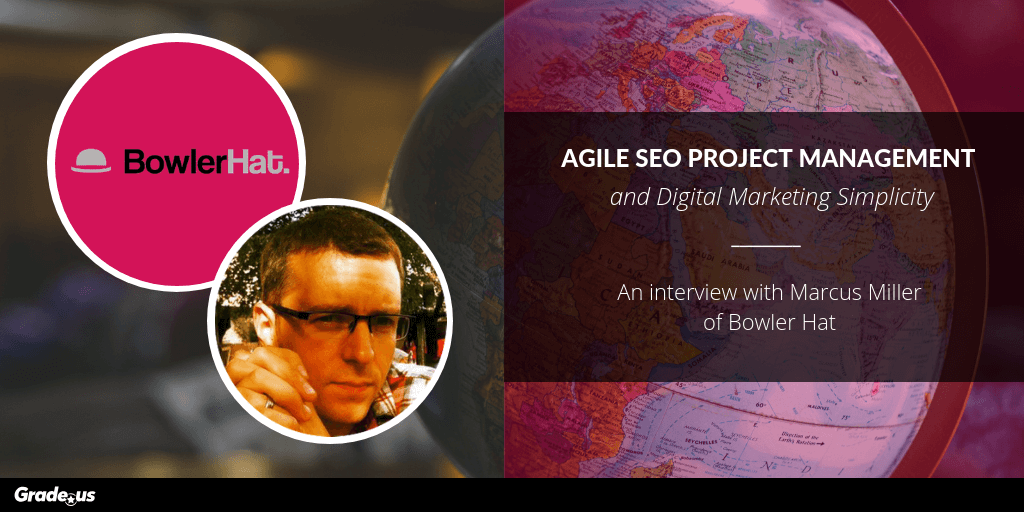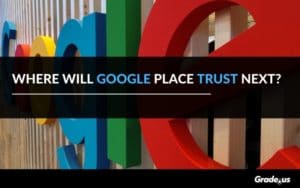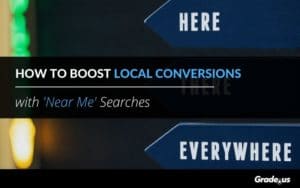Marcus Miller has been tackling tough digital marketing problems for nearly two decades. He's the owner of Bowler Hat, a UK agency devoted to helping small-to-medium sized businesses find success no matter where in the world they happen to be located.
He's known for the way he makes the marketing experience run smoothly for the customer, his ability to carry out international campaigns with barely a hitch, and an ability to forecast the future of SEO. He's also known for adapting certain techniques from other businesses to help digital marketing projects run more effectively.
If you check out today's interview, you'll walk away with some ideas on how to mimic some of his achievements in your own work.
On the benefits of simplifying digital marketing for clients
Carmen: Bowler Hat is all about simplifying digital marketing.
Can you tell me a little bit about what that looks like in execution and how it differs from a standard approach?
Marcus: Well, obviously digital marketing can get pretty complicated. Some of the things that we do are still complicated behind the scenes, but our goal is to simplify it for our customers.
So, whilst, for your average small business, setting up things like analytics and conversion tracking and funnels and all of these different things that are often necessary but are just more advanced kind of tactics...we do all of that, but we try and simplify everything by getting the client just to give us some simple objectives, what they want to achieve, and letting us work out all the actual specifics of the approach.
On approaching international businesses and digital marketing campaigns
Carmen: You've also done some work on international campaigns. What are some of the first steps you have to take when you're serving a company that's operating globally?
Marcus: Again, it all comes down to the clarity around the strategy and the objectives. It's really, really important. So, we've got to do that situation analysis piece. We've got to have a look at what the customer's objectives are. Then we've got to have a look - let me give an example.
We worked with one company that did kind of a safety harness for builders. Now, their main markets would have been the UK and the US, but they were based in Australia.
Now when we had a look at the kind of keywords those guys were wanting to be visible for, we noticed the people who were ranking didn't require the kind of technical approach that you can need for an international search campaign. So they didn't need individual sites for each individual country. They didn't even need subdirectories or anything else.
This was such a niche market that they could rank just on their Australian domain, with their .au domain. So that industry didn't need anything wildly complicated. It would have been easy to blunder in and to deliver some kind of technical monstrosity to try to take off International SEO best practices when in that case it wasn't actually needed.
Now, at the other end of the scale, if you take a look at the likes of Amazon or Ebay, or these kind of companies, well, they'll tend to have a site that targets each individual country. Now, that, again is a great solution. It's probably, in most instances, the best solution, because everything can be perfectly targeted to the specific languages in that location, or the geography of that location. But for small, even for many businesses it's prohibitively expensive and it's more complicated.
It's almost like you're running an individual business in each country, with which the likes of Amazon and Ebay, clearly they are.
There is this kind of middle ground, as well, where you still have one website, but then you geotarget specific parts of that website towards individual countries. So you may have a folder that targets...the root of the site may target the US. Then you may have a folder that targets the UK, and Australia, and Germany, and then you may have folders within these folders that then target the specific languages in those locations! So if you think of somewhere like Switzerland, where you may have English speakers, German speakers, French speakers, Swiss speakers, it can get relatively complicated.
So again, this all comes back to a clear understanding of the client's objectives. And then architecting the right technical solution for their objectives, and budget, and marketplace. So we're big on the analysis and research piece. We like to make sure the solution we're outlining for someone is the correct one.
Carmen: Now, are you multilingual? Or do you have to go in and get somebody who speaks the language to help you out when you're going, say, to Germany or Switzerland or one of these other places that don't speak English?
Marcus: Yeah, no, typically we do get some kind of help on that front.
On the pros and cons of using Agile SEO for project management
Carmen: You've also adopted an "agile SEO" strategy. Can you give our readers an overview of what that is, and how that works?
Marcus: Agile is just a framework for trying to cut down waste and to consistently improve results. It grew out of the manufacturing industry, lean manufacturing. It's not necessarily a perfect fit for something like SEO.
However, you can take a lot of the principles from something like agile project management and apply that to SEO. So, if you look at something like Scrum, which is one kind of agile framework, you have these specific different kinds of roles. So you'll have a product owner. The "Scrum Master," which is the person designed to keep everything working. You have individual team members.
The thing that's often most useful though is the project board.
We'll have - imagine, from this "digital marketing simplified" perspective -even when you're trying to make something simple to somebody, there's still a lot of moving parts.
So they're all up there. Having a project board means we can have a project backlog. We can have a list of all of these jobs that need to get done. But then we can start to bring jobs forward into our - imagine a board with multiple columns.
You may have a backlog on one side. Then you may have "in progress." You may also have "for review" or whatever else. You've got to customize these to some degree to your own kind of requirements.
We gradually move things from the to-do list or the backlog into the to-do list. Then we'll try and have sprints as well: these small bursts of effort designed to get specific key kinds of jobs or related jobs done. We also have something called a "Burn chart."
As we're completing these jobs, and we're allocating blocks of time, or whatever kind of attributes to these jobs, we move these jobs as they get complete to the other side, so we can start to see, so people can feel that there's actual progress. They can feel, whatever the job is, that they're making progress and chopping through this job.
Carmen: Are there any pitfalls to doing it that way?
Marcus: There's pitfalls to anything. It can end up being over complicated. I really like a really simplified approach to this, just "To Do," "Doing," and "Done," just so tasks are being moved across.
But where this can get difficult is when you have multiple people working on an individual project.
So imagine we're working on a small business. But then they have social ads across multiple social networks, let's say LinkedIn and Facebook. They might have some search engine optimization going on, some content marketing going on, some organic content marketing for social as well. There may be lots and lots of things being done by lots and lots of people. So sometimes it's not the best tool to manage the overall teamwork. You still need to have other things.
So we have a daily meeting, or a scrum, where everybody working on an individual project sits down and talks about the jobs they've been doing or any problems that they've got with the job. The things that are on the board actually, so that people are actually communicating. When you've got a bunch of different people working on individual projects.
Carmen: What happens when somebody falls behind?
Marcus: Again, this happens all the time, primarily because of hold ups at the customer's end. There can be a lot of deliverables that we need, and if something doesn't get delivered, or if there's a technical issue, then it's hard to provide a general answer to that question.
Maybe some other elements can continue. Maybe the project has to wait until one of these issues can be resolved. We'll frequently see issues with the ability to track results or analytics, or get some kind of code installed. Or get Google time manager installed in a site, or some such. "It depends" is always the answer!
On working with clients and keeping them on track
Carmen: So that is a problem that everybody in our industry has, is getting the client to get you what you need to actually do the job. How do you get that done? How do you handle a client that's just sitting on the things you need to help them?
Marcus: Often we'll try and do it for them. The best example of this is any kind of web project. We're weighing in on content, particularly with smaller businesses.
If you've got a small business, say, ten people, and they're busy, they've got multiple teams, they're doing well, but they need this new marketing vehicle put in place. But, often, you find a lot of things will come from that one guy at the top of the business. He's just too busy. He's probably already working 12, 15 hour days, and the things that you need are - with another agency I heard of had a website project that waited three years to get content. At the end of the day, this website, that had never been launched, was out of date before they even got the content to put it in place.
So we'll try and provide that service ourselves, if possible. We'll try and even go into the business, if we need to, send someone in there to extract the information we need. Or, again, we'll use technology and specific tools.
We just actually trialed in, on the web design side of the business, a new WordPress plugin called WP Feedback, which has proven really useful. It's basically a plugin that you add to the site while the site's in development. The user, or whoever it is within that business, can go to the site, click a little plus button that floats on the right hand side, and click any element on the page. They can then leave a comment, upload an image - so when we're trying to get feedback, and we can't get everybody to sit around the table, and to go over everything - or there's multiple stakeholders and everybody's got feedback and we get stuck in the middle of what's essentially an internal discussion.
We find that tools like that sometimes help. Or, again, using project management tools, like Asana, that gives the customer access to those projects. It really depends on what the customer themselves are using, what the actual things are that we're waiting for, the things that we can do - it can be super difficult to give generalized answers to these questions, because unfortunately every project's different.
I mean, fortunately, the majority of technical SEO, generally those are things we can do ourselves. So, wherever possible we want to eliminate the bottleneck.
On predicting SEO trends for Google as they continue to evolve into more zero click SERPs
Carmen: Let's switch gears for a minute. You are known for your ability to be spot-on when predicting trends in the SEO sphere. How do you do that?
Marcus: Just experience, I guess. I've been involved in SEO in some capacity for probably for almost 20 years. So it's just - I don't think that things change as quickly as people think that they do.
People tend to get very surprised when a new algorithm comes along, and a certain category of sites may see some losses, or a certain tactic that never should have been working in the first place, but was working, has some kind of impact.
Now, I can remember 2003, I think, the Florida update. These initial quality updates. This has been going on for a long, long time. It's just like cowboys and indians. The SEOs are the indians, Google's the cowboys trying to chase them out of town. I tend to think that things - it's evolution.
Things like featured snippets start to arrive, and then we start to see more and more snippets.
If you can think about Google's reasoning, get into Google's mindset, what they want to provide to their users, then yeah. I don't tend to think there's much surprising that happens.
Carmen: I've found that a lot of SEOs, not at the top end of the industry, but in the middle and bottom range, are very, very content, even frantic, to use some shortcuts. They do those things which really shouldn't be working, and they know they shouldn't be working.
Why do you think it's so hard to get people to align to what Google has basically been saying they want all along? Why don't people just do that?
Marcus: I think because the other way is easier. People are setting up businesses around selling SEO services. A large part of that ultimately comes down to link building and having something tangible to show the customers.
It's much easier to manufacture a link than it is to earn a link from a real high-quality site. So people will do what's easier and what they can sell. Still at street level, the majority of SEO companies are still doing some form of manufactured link building.
Whether that's just large scale guest posting, or what we still feel like are these private blog network type approaches, where people are buying up expired domains, putting a simple one page website on there. You'd think that these approaches would have died out a long time ago, but they're just easy to scale.
So folks will ultimately do what's easier.
You've also got this situation where your average customer just doesn't know any better.
The mentality of the smaller customers, at least, is: if it's working, it must be good.
Well, that's okay, until it isn't working anymore. The investment you've made over the last X years is suddenly turned to dust.
Ultimately I would say that's primarily financially driven, or ability-driven by the smaller agencies.
Carmen: Do you have any predictions right now about trends we can expect to see in the next 6-12 months?
Marcus: In organic search, primarily?
Again, I think more of the same. I think we're seeing more and more snippets, and the snippets are getting stronger. So the big prediction, I guess, is that more and more queries will not generate a click.
The user will get the information they require within the search results without needing to exit or leave the page of results. Google keeps those people on Google longer.
Google's interesting by its nature. Because a search engine exists to send people somewhere else, or, at least, historically, that was the whole purpose of a search engine. But look at social networks. A social network exists to keep people on the social network. Facebook, for instance, their scope for showing ads to people is generally broader than the search engine scope for showing ads to people.
So, you know, definitely we see more and more queries or searches that aren't driving clicks.
We have a customer that develops mobile apps. They see a snippet pop up for one of their main search queries. We know this is one of their main converting search queries as well, because we do their PPC as well. And although they were still technically organic first, they saw a drop of about 70% in click-through just from the introduction in the snippet. So these changes to the SERPs, they can have a massive impact.
I predict more and more searches where Google will try to answer the question themselves.
On Google's future as a Pay-To-Play business model
Carmen: It seems like it would make it hard for a business to get customers that way. If even the high-converting queries are keeping people on Google's page - how, then, do we get to a point where a searcher chooses that business?
Marcus: Well, traditionally the kind of queries that would generate a featured snippet aren't necessarily high-converting queries. They're probably more informational. So they are probably higher up the funnel. They're more queries you may be using to get those first clicks through to your site, then you can follow up with some remarketing or whatever other tactics or other platforms.
For example, we've got an ad on our site for beginner's SEO tips. It shows a snippet.
Fortunately, the tips themselves in that instance, you've got to click through to get the information. Well, if someone clicks on that post we've got them on a list of sorts. Ideally, we'd like them to download a guide so we get them on our email list, but even if they don't do that we can remarket to them on Facebook, or LinkedIn, or wherever else. We're using that as a top-of-the-funnel qualifier, more so, to move someone from a suspect to a prospect.
Now, with the high-converting or more commercial queries, the main competition there tends to be from ads and local listings. There are more and more snippets in that case.
Few searchers say - a plumber. You won't tend to see a snippet there. You'll probably see four ads. Then you'll probably see a local pack. You'll see, at least in the UK, we tend to see a lot of portals. A search for a plumber, now, where I'm sitting, gives me four ads. Some of those ads have site links. A local pack. I have four portal-type sites before I even see a real plumber.
Then we do have 'some people also ask' results as well.
So I think, much like Facebook, for many, many businesses Google has moved to a pay-to-play model. Some businesses are struggling to rely on SEO alone, unless they're doing content marketing via SEO. It depends upon each individual kind of industry. But Google is just chipping away, all the time, at the commercial results.
Carmen: If you have a business that cannot compete because they can't pay to play and they can't really win on SEO, what, then, do you do for them?
They've still got to do some sort of digital marketing, it's inevitable. Past making their Google My Business page work for them...
Marcus: Absolutely. That kind of thing.
And, again it depends, doesn't it, on whether you're looking at these kind of macro or micro locations? If you're a plumber in a small village that has two plumbers, and people are looking for a plumber in that village, you can do some kind of local search optimization. Google My Business. It's probably something that once it's done, folks are going to find you and that may generate enough work.
If you're a large plumbing company that operates nationally, then that approach is not going to cut mustard. It's about determining what's right for each individual. Getting to that digital marketing simplified philosophy, if you can make a sensible analysis at the beginning based on the customer's objectives and everything they're looking to achieve, then you can help choose the right approach for those objectives.
Of course, we get people all the time whose objectives are completely unrealistic. It normalizes itself. If you do a search for a small business' keywords and the page results are dominated by ads and superbrands like Amazon and Ebay, it's difficult. Not to say SEO becomes a tactic they can't use, but it's certainly not a short term, direct response tactic. There's always an option, and as a business you have to have some form of marketing budget.
Again, certain companies we can do really great stuff on Facebook. It just depends. It's about picking the right tool for the job.
Want to hear more of what Marcus has to say? You can follow him on Twitter at @marcusbowlerhat.
About the Author
Raney C. Hudson
Raney C. Hudson is an independent content consultant with a 10+ year track record in the digital marketing industry.










